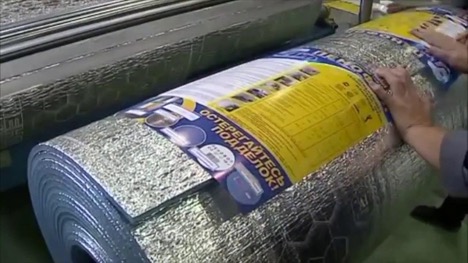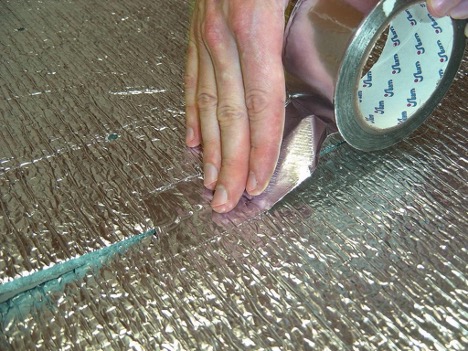Penofol or isolon - the better to insulate a room from the inside and outside
In modern construction and renovation, the use of high-quality insulation plays a key role in creating a comfortable indoor microclimate. Among the variety of materials, penofol and isolon deserve special attention. These insulation materials have different characteristics and areas of application, which gives rise to discussions about whether penofol or isolon is better suited for insulating rooms both inside and outside.
Izolon is a polyethylene foam that has excellent heat and sound insulation properties. Izolon insulation from the inside of a room is widely used due to its flexibility, ease of installation and environmental friendliness. Penofol, in turn, is a foiled polyethylene foam that reflects thermal radiation, which makes it an effective insulation and vapor barrier.

The content of the article
Benefits and Features
When considering the difference between penofol and isolon, it is worth mentioning the key features of each material. Izolon, thanks to its structure, provides not only heat but also sound insulation, which makes it an ideal choice for rooms with increased requirements for acoustic comfort. Penofol, on the other hand, thanks to the foil layer, perfectly reflects heat, keeping warm air indoors in winter and preventing it from overheating in summer.
The main difference between these insulation materials is their mechanism of action and scope of application. While insulating walls with isolon from the inside is suitable for rooms where additional sound insulation is required, penofol is recommended for use in cases where it is important to ensure maximum thermal insulation and reflection of heat rays.
Application and selection
The choice between isolon or penofol depends on the specifics of the task and the operating conditions of the room. It is important to consider that both of these materials can be used either independently or in combination with each other, enhancing the overall effect of insulation and sound insulation.
Here are the main criteria for choosing between isolon and penofol:
- What is isolon needed for? If the priority is sound insulation and insulation without a reflective layer, then isolon will be the best choice.
- If you need to insulate a façade or interior walls, then penofol is often chosen due to its reflective properties, while isolon is more often used for interior work.
Based on the above, the following conclusions can be drawn:
- Izolon is ideal for internal insulation of rooms where sound insulation is important and where there is no need to reflect heat rays.
- Penofol is recommended for use in cases where maximum heat reflection is required, which makes it ideal for use outdoors or in rooms with increased thermal insulation requirements.
Thus, the choice between penofol and isolon should be based on the specific needs and operating conditions of the room. Both materials have their advantages and can be effectively used both in combination and separately to achieve optimal results in insulation and sound insulation.

What happens if you mix up these materials in your work?
If you confuse penofol and isolon when insulating rooms, this can lead to several consequences, depending on the specific requirements for insulation and sound insulation of the object. It is important to understand the key differences and purpose of each of these materials in order to avoid mistakes when choosing insulation.
If to insulate the facade of a building or room where maximum reflectivity and thermal insulation is required, isolon is used instead of penofol, this may lead to insufficient thermal insulation. Penofol, thanks to its foil layer, reflects thermal radiation, thereby improving the thermal insulation properties of the room. Izolon, without such a layer, will not provide a similar reflection effect.
If the task was to increase the sound insulation of the room, and penofol was used in the work instead of isolon, this will not lead to the expected results. Although penofol also has some soundproofing properties, isolon is better suited for tasks involving sound absorption due to its structure and density.
Choosing the wrong material can affect the indoor climate. Penofol, which has vapor barrier properties due to the foil layer, if used incorrectly, can contribute to the accumulation of condensation in the walls if proper ventilation is not provided. At the same time, isolon used in situations where vapor barrier is required may not provide sufficient protection against moisture.
The wrong choice of insulation can affect the durability of building structures.For example, problems with condensation and humidity can lead to the development of mold and mildew, which negatively affects the condition of materials and can accelerate deterioration processes.
conclusions
Using more expensive material where it is not required can lead to unnecessary costs. For example, penofol is usually more expensive than isolon, and its use in situations where basic heat and sound insulation is sufficient may not be economically feasible.
Thus, it is important to carefully approach the choice of material for insulation, taking into account the specifics of the room and the assigned tasks. The correct choice of insulation will provide not only comfort and savings on heating, but will also keep the building in good condition for many years.



